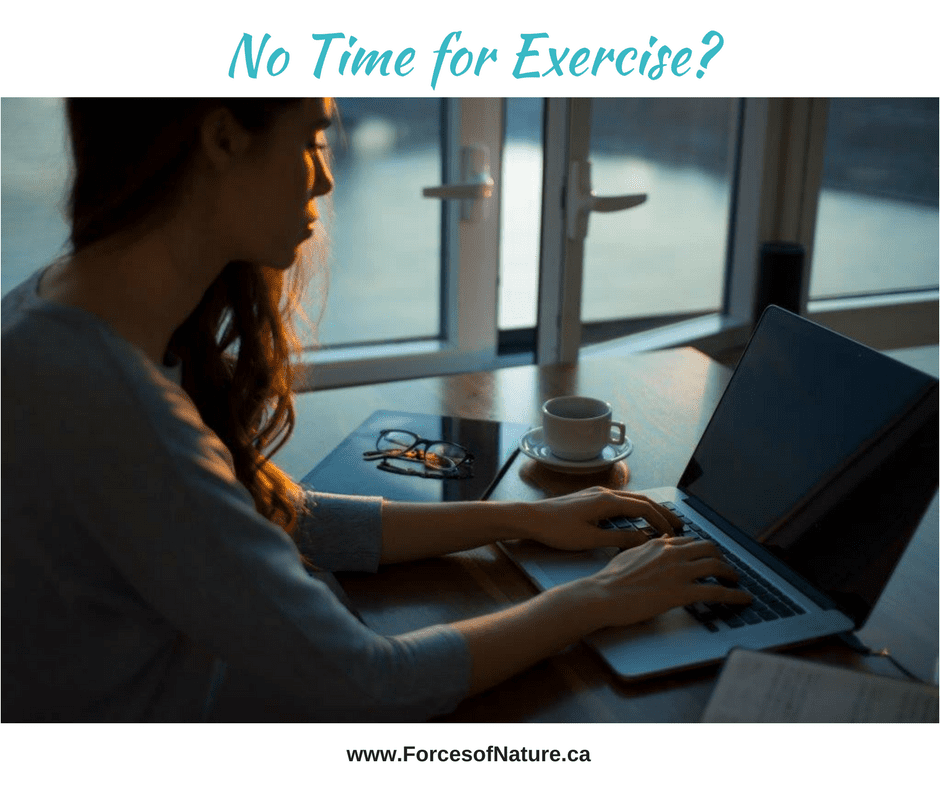I Don’t Have Time to Exercise!
Given that exercise reduces stress, allows for better mental focus, productivity, and energy, you probably don’t have time not to exercise. Most people equate exercise with 1-2 hours at the gym 3-5 days per week. It’s great if you have time for that, but if you are a working parent or have a particularly demanding job (and whose isn’t these days?) you probably don’t. Frankly, the idea that we need to do a one to two-hour workout is so old school. We need to reframe our concept of what constitutes exercise, particularly beneficial exercise for our metabolism. Many studies are now proving that High-Intensity Interval Training (HIIT) does as much, if not more, than endurance exercise in a much shorter period of time. (Dr. Oz even said so on his radio health tips, so it must be true).
What is SIT exercise or HIIT?
Sprint interval training (SIT) is a low volume (that means short!) and high-intensity form of interval training. Energy for SIT is produced via both the aerobic (oxygen burning) and anaerobic (non-oxygen burning) metabolic pathways. SIT is an efficient and effective means to improve aerobic fitness along with many other parameters related to healthy metabolism. A typical SIT or HIIT workout might involve running or cycling sprints, followed by periods of continued movement at a much slower pace. For example, you might do a running sprint for 20 seconds, followed by a 1 minute light jog, then another 20-second sprint, 1-minute walk, and repeat this pattern for 20 minutes in total.
Proof that Interval Exercise Training Works
One study had overweight/obese participants perform 6 sessions over two weeks consisting of 4 intervals of 30-second anaerobic sprints on a cycle ergometer, the equivalent of a stationary bike. That is, they cycled full out for 30 seconds with a 4.5-minute recovery between each sprint. So that’s sprint cycling full out for 30 seconds, keep cycling at a slow steady pace for 4.5 minutes and repeat 4 times, three times per week for two weeks. The outcome was a significant reduction in waist and hip measurements, and blood pressure and significant improvement in insulin sensitivity. All very positive outcomes for three 20-minute workouts per week for 2 weeks.
Other Tips for Those Short on Time to Exercise
- Squeeze it into your day whenever you can. Park farther away from work or the store and walk the extra distance. Sprint up a flight of stairs rather than walk. Run to the bus stop. Anything that sets your heart racing.
- Get up early in the morning. This works with your body’s internal clock and means you are less likely to get sidetracked by other commitments.
- Get exercise CD’s or download exercise videos. Having the option to workout in your own living room makes exercise much more convenient, removes the commute time to the gym and also you can squeeze it in on your own schedule.
Need more lifestyle advice? See one of our naturopathic doctors, Dr. Rachel Vong or Dr. Pamela Frank or our psychotherapist, Ichih Wang. Need help with exercise recovery? See one of our massage therapists, our acupuncturist or our chiropractor.
Exercise Research
Short duration SIT is an effective and efficient form of improving aerobic fitness in untrained individuals. Source: Br J Sports Med 2011;45:A8
2 weeks of this SIT substantially improved a number of metabolic and vascular risk factors in overweight/obese sedentary men, highlighting the potential for this to provide an alternative exercise model for the improvement of vascular and metabolic health in this population.
Source: Metabolism Volume 59, Issue 10, October 2010, Pages 1421–1428
